VR Editors
Software editors/controllers available for Roland VR09, VR09B and VR730:
There are software editors for VR for iOS (official Roland app), Windows, Mac, Linux (and spartanic for Android)
(A) Windows, OSX, Linux: CTRLR V-Combo EDITOR (free)
-
For details and installation see V-Combo EDITOR site
V-Combo EDITOR is a graphical user interface controller for VR09 and VR730 running on Windows, Mac and Linux to access:
– ‘VR factory features’ like VR sounds, organ parameters, Virtual-Analog Synthesizer, etc
– ‘VR hidden features’: hidden sounds, multi-zones/layers, GM2-engine with ca. 2000 GM2 sounds (see here)
– ‘VR registration organiser’, ‘V-Piano’-enhancer, Midi-Mapper etc etc etcorgan control hidden sounds, multi-zones/layers Virtual Analog Sound Designer 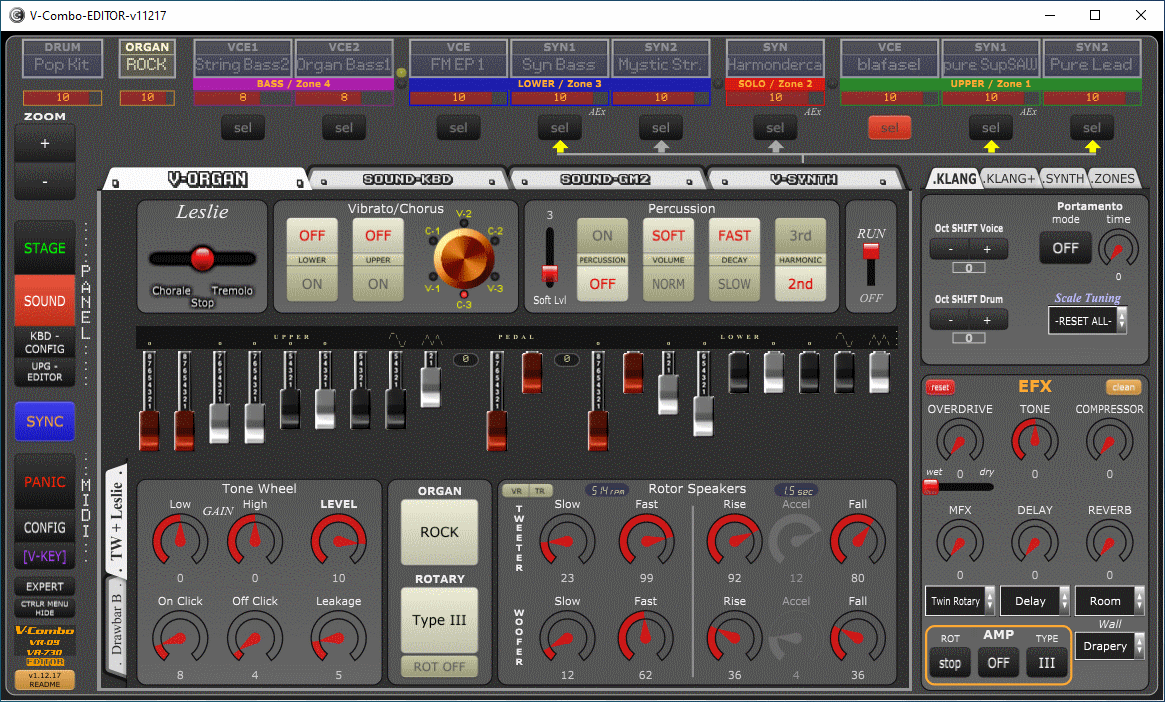

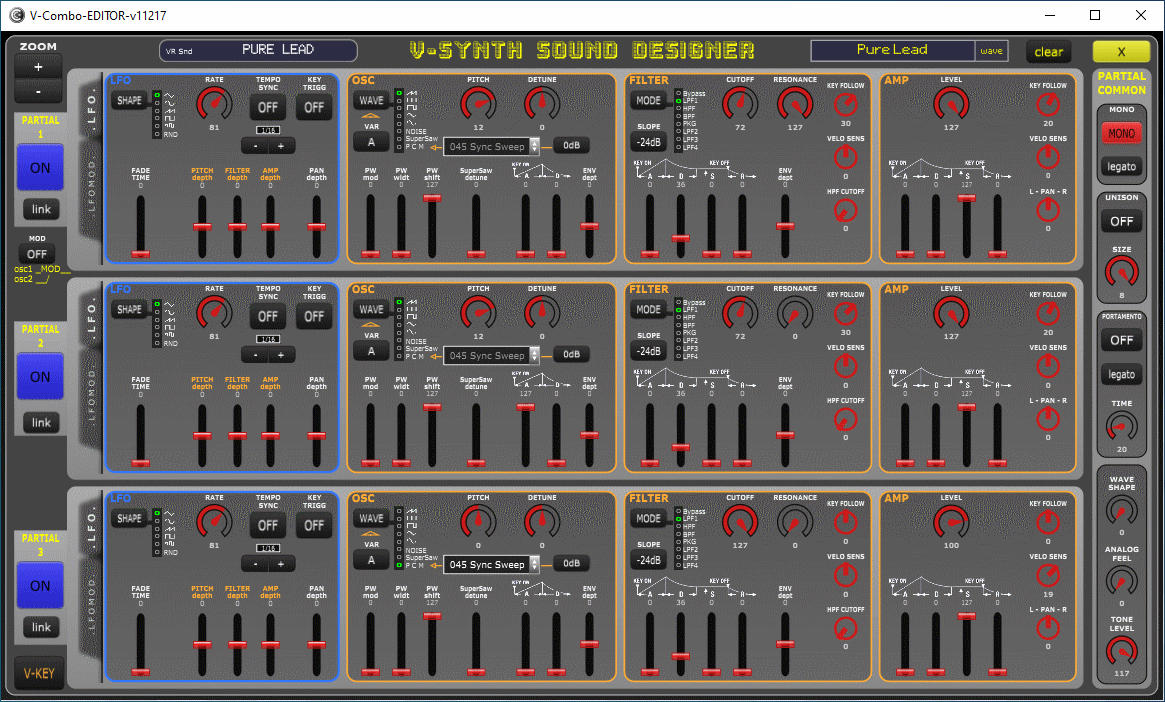
- Connection type: usb-cable (standard ‘printer cable’ USB-A)
- Hardware: EDITOR runs even on very low spec and/or old-vintage PCs, Laptops or (Windows-)tablets
CTRLR runs fine on the lowest spec tablet class (usually ‘atom’-type processor, 2GB RAM, 32GB disk) allthough in general these machines are a bit slow - Operating system: Windows from XP (SP2) to W10/W11, Apple OSX (MacOS) and Linux
- Touch Display: EDITOR is reactive (and optimized) to touch displays – which is the ultima ratio for ‘stage usage’
Recommendations for Laptops/Tablet to use with Editor: Hard- and Software
(B) IOS (iPad): Roland VR09 Editor App (free)
-
Features: controller for VA synthesiser and organ
Download: ROLAND Website
Connection type:
– usb-cable (iPads with lightning socket need the ‘Apple camera connection kit’)
– WLAN (requires an usb-wlan-transmitter for VR, e.g. ‘Netgear WNA 1100’)
Hardware: any iPad does the joborgan control VA synth control 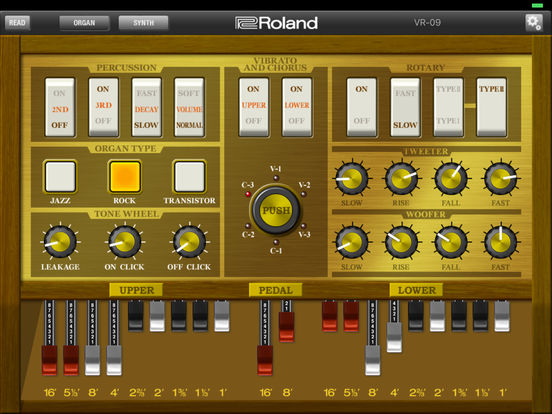
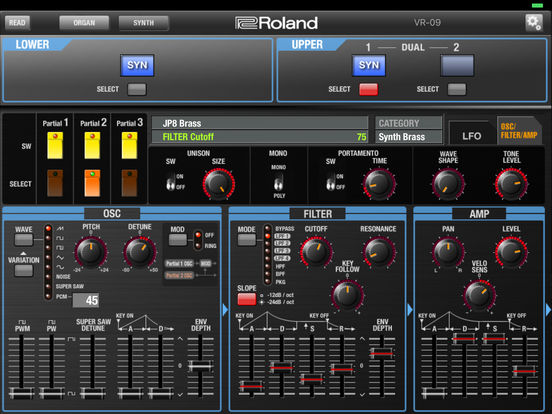
(C) IOS (iPad): KeyStage Controller by Graham (free)
-
For details and installation see V-Combo KeyStage
V-Combo KeyStage is a plugin for KeyStage created by Graham Stow that transforms VR into a Controller for its inbuild “GM2 engine”
factory and GM2 sounds 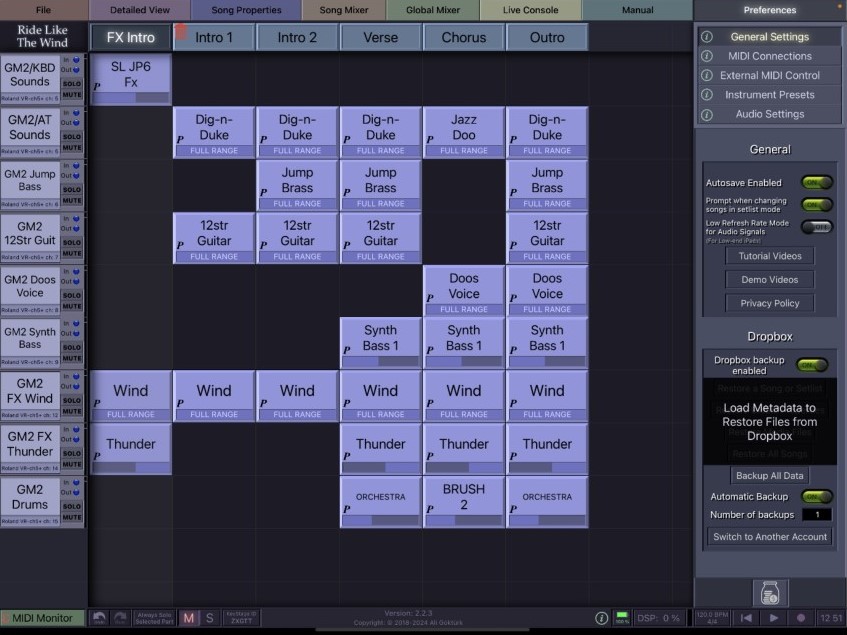
(D) Android: Midi Commander by Boldero (free)
-
Features: customisable controller app. Has a ‘organ drawbar panel’, e.g. for controlling VR drawbars.
Download: Google playstore (free)
Connection type: usb-cable (standard printer cable USB-A. Devices with USB-C: use an USB-C to -A adapter. Devices with pre USB-C: use an ‘OTG’ adapter)
Note: MC can send midi system exclusive messages including Roland checksum which makes it capable of communicating with VR.A preset-file for MC for controlling VR upper/lower drawbars, organ parameters, filter/envelope, Global Tranpose can be downloaded here (more details see text file in the zip-file): MC-VCombo.zip
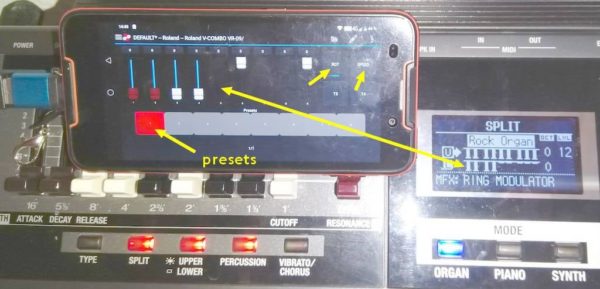
Editor comparison table:
features VR ‘keyboard only’ VR + Roland VR EDITOR VR + V-COMBO CTRLR EDITOR Operating System: – IOS (iPad, iPhone) Windows (XP – W11), OSX (MacOS), Linux voices 2 voices (layer or split) + organ like ‘VR only’ 9 voices (in different layers/zones) + organ [R] split zones 2 split zones like ‘VR only’ 4 split zones (upper, lower, solo, bass) [R] voices/layers (multi-timbral) 2 like ‘VR only’ up to 4 layers in upper, 4 layers in lower and 2 layers in bass [R] organ drawbar control upper OR lower upper AND lower upper AND lower, 2 drawbarsets A/B, 5 organ presets/manual [L] organ + leslie controls knobs + VR-menu all controls on the panel all controls on the panel [R] [L] envelope/filter controls for upper manual – for all zones/manuals [R] Virtual Analog synthesizer – full control panel [1] full control panel with additional parameters [R] [1]
VA Sound DesignerATELIER sounds – – full control for all ATELIER sounds (ca. 500) [R] GM sounds + control – – access and control of GM2, GS and Roland SoundCanvas sounds (ca. 2000), channels and effects [L] [2] additional sounds – – full control of ca. 200 ‘hidden’ sounds including JP80 ‘Synth Legend Tones’ [R]
additional effects – – Sustain (bass, manuals), Chord/Harmony-Intelligence, additional reverb-types, additional effects for D-Beam, rhythm break/fill [R] additional controls – – master-tune, refined controls for damper assign and key-velocity [R] VR registration organizer – – UPG-Editor to re-order, copy, merge registrations via VR-registration-set files on USB drive diverse – – L-R-panning, Midi-Mapper (Translator), program launcher, V-Piano enhancer, rhythm-controls, editor patch register (for deep-synthesized sounds), editor patch register for GM sounds [L] VR+CTRLR EDITOR notes:
[R]: features + changes can be saved to VR regisrations and be used without CTRLR EDITOR
[L]: features require live (STAGE) usage of CTRLR EDITOR
[1]: see limitations when saving VA-modded sounds to VR registrations
[2]: GM sounds cannot be saved to VR registrations but there are many ways to use them live thoughCTRLR V-Combo Editor: additional ‘hidden’ VR09/730 features:
V-Combo Editor allows to access hundrets of ‘hidden VR features’ (features not available on VR front panel). Many features save with VR registrations (like multi-zones/layers, many hidden sounds), others don’t (like ‘GM2-engine’)Any VR setup that makes use of the following features is entirely savable to VR registrations – in other words: it is possible to programm (by V-Combo Editor) VR registrations with 4 keybed zones, 9 voices, ‘hidden sounds’ etc
++ additional ‘zones’:
VR09/730 ‘factory’: 2 zones (upper and lower manual)
Hidden: plus 2 zones = total 4 zones: upper, lower, solo, bass. Zones can be splitted or overlapped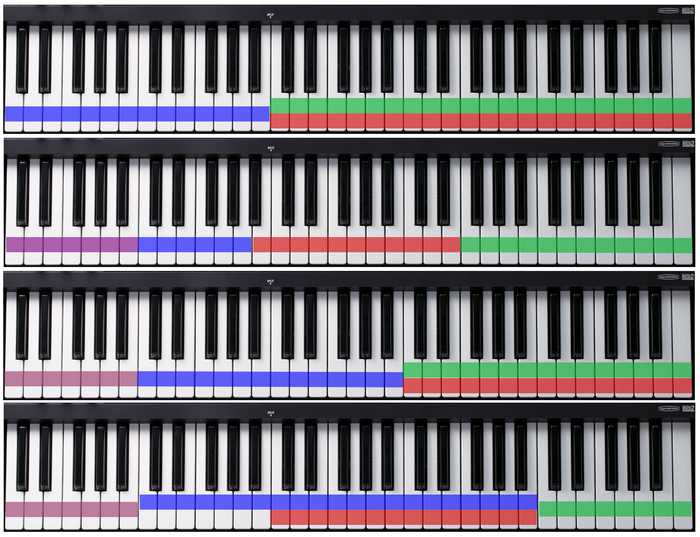
some examples of VR09 splitted/layerd zones: upper (zone 1)solo (zone 2)lower (zone 3)bass (zone 4)++ additional ‘voices’ (parts):
VR09/730 ‘factory’: 2 voices (‘DUAL’ or SPLIT mode) + organ
Hidden: plus 7 multitimbral voices = total of 9 voices
3 voices in upper manual
1 voices in solo manual
3 voices in lower manual (can be increased with 1 voice from solo)
2 voices in bass manual
organ (upper/lower)++ additional ‘sounds’:
‘Hidden’ sounds of the VR09/730:
ca. 700 additional sounds (including sound set of Roland ATELIER organs and Synth Legend Tones),
additional keyboard drum sets, etc
GM2: more than 2000 sounds and drumsets of Roland GM2, GS and an entire SoundCanvas soundset++ additional controls:
key touch setting for lower manual
chord intelligence, harmony intelligence off/on and harmony intelligence type
pitchbend/Mod lever: assign to UPPER/LOWER/BASS
drum octave shift
sustain (on/off + mode) for upper, lower or/and bass manual
dual solo top/last
D-Beam: SuperNatural ‘N.1 and N.2’: assign to upper/lower/solo/bass/all++ additional options for existing keyboard controls:
Damper pedal mode : assign to ‘solo’ voice
D-BEAM : filter (cutoff), pitch up, volume, rhythm fill-in/break
Reverb: Hall2, Hall3, Small Church, Delay++ additional parameters for builtin VA-Synth (not accessible in iPad app):
Portamento: normal/legato
Mono: staccato/legato
Analog feel
OSC: pulsewidth-shift for pulse-wave
OSC: PCM wave gain
FILTER: HPF cutoff
FILTER: Velocity sensitivity
AMP: key follow
LFO panpot
LFO keytrigger
LFO-Modulation panpot -
Features: customisable controller app. Has a ‘organ drawbar panel’, e.g. for controlling VR drawbars.